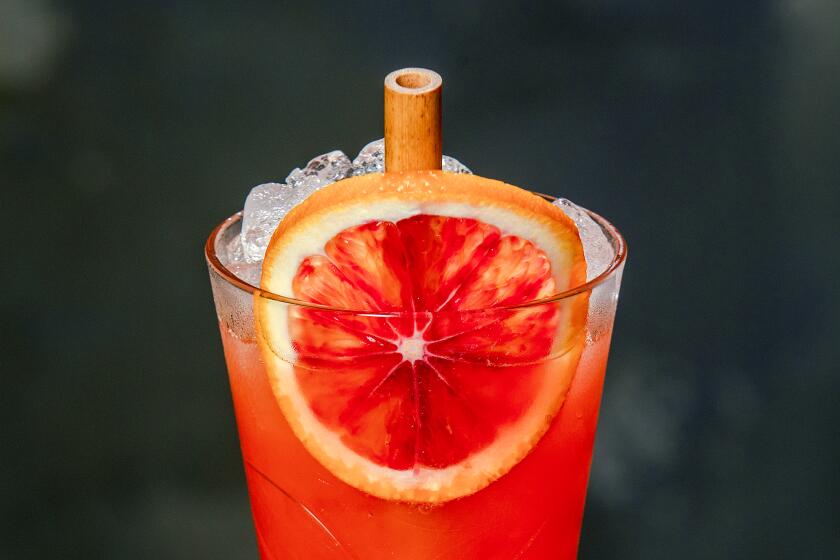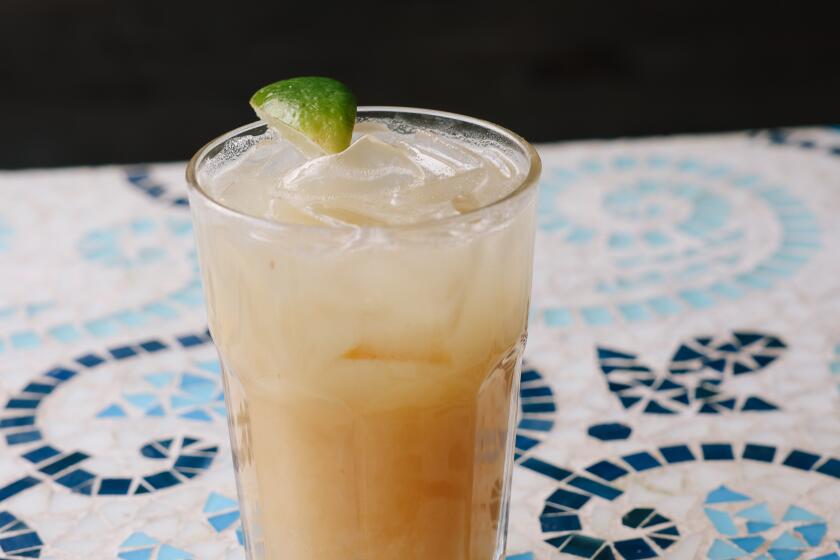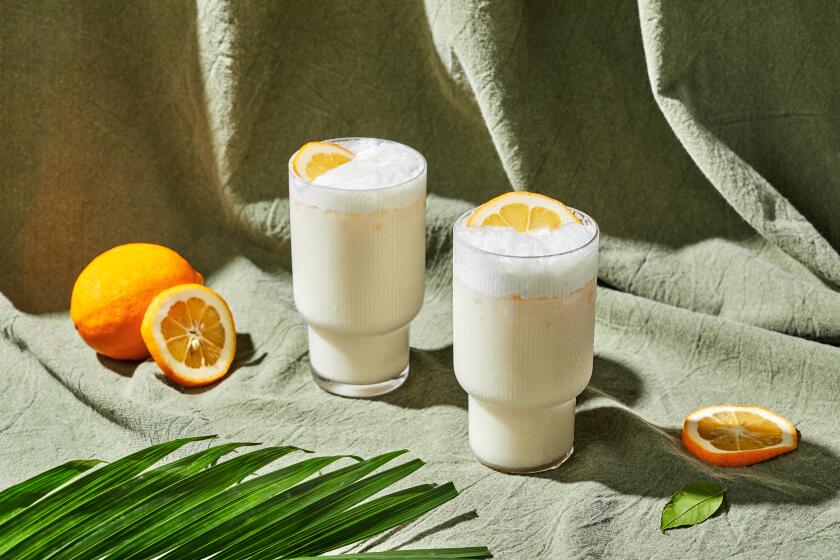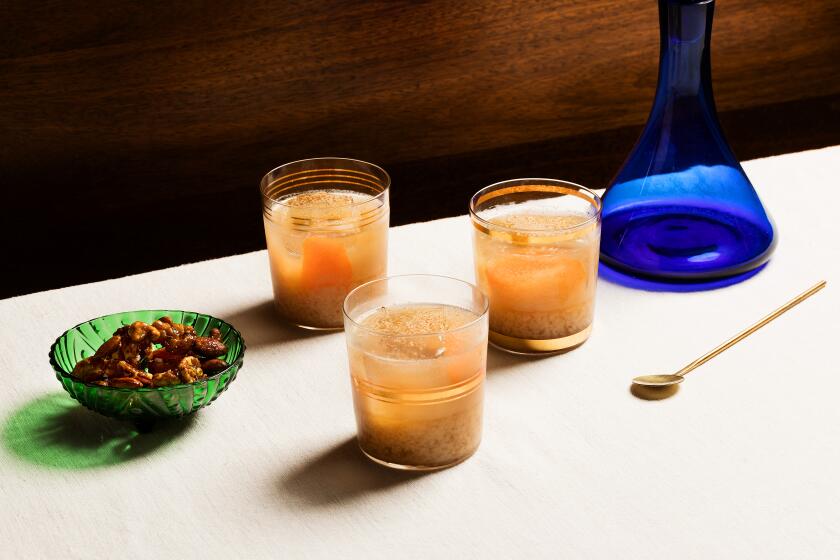Chocolate Amaretto Cappuccino

When winter’s rains sweep through chilly Southern California, all I want to do is rush indoors, cozy up to a good book and prepare a steaming pot of chocolat chaud. Instantly, my thoughts wrap around the memory of the hot chocolate served at the chateau in Belgium. The Chateau du Pont d’Oie, literally “the castle of the goose bridge,” made hot chocolate unlike any other.
Four years ago, I spent the summer teaching French and Belgian teens the differences between perfect and imperfect verb tenses at a school in French-speaking southern Belgium, known as Wallonia. I had known, I have known, I will have known. Had I known my voice would grow hoarse by summer’s end, I would have incorporated teen-friendly French slang from Truffaut films into my teaching vocabulary. “L’Americaine,” the students would whisper as I walked past.
Pure white milky cows, Belgian Blues, dotted the pasture next to the school located in the heart of the Ardennes region, an expanse of undulating forests and valleys, hidden hills, trails and lakes, believed to be the inspiration for the Forest of Arden in Shakespeare’s “As You Like It.”
From sunup to sundown, the British teachers and I coaxed, cajoled and commanded the students to converse and enunciate vowels and verbs in “Ing-leesh.” “Ecoutez et repetez, repetez et ecoutez,” listen and repeat, repeat and listen, became a mantra day in and day out, all summer long. In the evenings, the teachers adjourned to the village pub to play electronic darts, smoke cigarettes and drink Chimay, Hoegaarden or Orval, local beers brewed by Trappist monks.
On our days off, Selina, a teacher from northern England, and I would bike through villages winding sleepily through the past and ride to the Chateau in Habay-La Neuve. Pedaling through the main gate, we’d take a quick ride around the lake, duck underneath the leaves of the trees, and stop at the cottage restaurant for chocolat chaud (pronounced “show’). The chateau was an old castle turned swanky bed-and-breakfast frequented by well-heeled French and Luxembourgeois on weekend getaways. Cars with Parisian plates were always parked on the gravel lot.
With one glance at our mussed hair, grubby T-shirts and flushed faces, the chateau’s flawlessly dressed waiters would wave Selina and me toward the patio.
“Would you prefer to be seated outside?” they would ask.
“No, we’ll sit here in the salon. We’ll have chocolat chaud.”
“This chocolat chaud,” they would always announce, “will take awhile. The chef has to melt the chocolate.”
“Fine,” we’d say. “We can wait.”
Bon.
It was Pooneh, a Persian-born Londoner, who introduced us to the chateau. We were holed up in the teacher’s room watching a French-dubbed episode of “The Simpsons” one gloomy gray afternoon when Pooneh announced, “It’s time to have chocolat chaud.”
Belgium’s cloudy skies are as notorious as its reverence for fine chocolate making. It had been raining for days, and as soon as the rains let up, a group of us headed out on foot for the chateau.
Immediately upon entering the salon, you felt decontracte -relaxed to the hilt. Perhaps it was the geese floating across the surface of the lake, or gazing out at the life-sized chess set in the garden. We sat in big, overstuffed chairs covered in floral chintz and waited.
Waited for that chocolate to melt.
The waiter arrived, bearing a silver-tiered tray of light and dark amber-colored rock sugar on the table, then he placed a pot of steaming chocolat chaud in front of us. With a serving towel draped over his arm, he poured the hot chocolate, a liquid the color of creamy, molten clay, light and ruddy, cooling to a flat, mineral-like sheen inside Villeroy and Boch china teacups.
On a plate, delicately made fruit tarts no bigger than an inch around accompanied dark chocolate-covered nuts placed like numbers on a clock. Between the tarts and nuts sat miniature madeleines, the flower of the china pattern peeking through as you picked up a delicate cake.
If time could stand still, it did, accompanied by the chateau’s chocolat chaud. And what a chocolate it was. Each drop was rich and sweet without a trace of bitterness, all romance and elegance, chintz, velvet and storybook cottage, in a cup.
The secret, Pooneh would demonstrate, was to place a morsel of quartz-shaped sugar on your tongue, sip some hot chocolate and let the liquid slowly dissolve the sugar in the back of your throat.
Sated, we walked back to the school chanting ecoutez, repetez, repetez, ecoutez, listen and repeat, from that afternoon at the cottage, the first of many visits to the chateau that summer.
Rich, chic and fashionable, chocolate is hot all over the world. In Argentina, the trendy drink at bars is the submarino, bittersweet chocolate submerged in steamed milk. In Spain, France and Italy, locals start the day with chocolate con churros, chocolat chaud or latte al cacao.
In any language, chocolate is lauded for its curative and restorative powers. It contains a chemical related to caffeine known as theobromine, which means food of the gods. The Aztecs used chocolate as currency and served the drink in pure gold goblets with spoons inlaid with tortoiseshell to the Spanish conquistadors.
Another favorite hot chocolate has roots closer to home. When I was growing up in Southern California, during the rainy season I would watch Rene the butcher make me Mexican hot chocolate at my family’s grocery store. He would whir hot steamed milk and disks of grainy, spicy Ibarra chocolate from Mexico in a blender.
And then there’s champurrado, hot chocolate thickened with ground corn the way I learned to make it from my friend’s grandmother in Rosemead. Inside Granny Rosales’ sunny kitchen adorned with photos of smiling grandkids, foot-long cinnamon sticks were sticking out of a vase. While Granny instructed Lia, Zac, Jack and me in champurrado-making, we took turns stirring and measuring ingredients, mainly, chocolate, cinnamon, milk and Masa Harina, the corn meal used for tamales and tortillas.
“I remember my grandmother used to grind her own corn for the masa to put in the champurrado,” said Granny.
Making Mexican hot chocolate is easy, just a tablet of chocolate and milk in a blender. But making champurrado is a slow process, one that involves scent, steam and spice. Ten-year-old Zac kept watch over the boiling cinnamon sticks and stirred the masa until his arm got tired. Then we added the milk to the cinnamon-scented chocolate. Thick with masa, champurrado is best served in small cups with fresh pan dulce and good conversation.
In Los Angeles, you don’t have to go far to experience good hot chocolate. Coffeehouses all over town serve pretty decent mocha and hot chocolate drinks usually consisting of steamed milk and chocolate powder or syrup. Some hotel restaurants, like the Omni Los Angeles atop Bunker Hill, serve chocolat chaud by request. Espresso Mi Cultura in Hollywood and the Border Grill in Santa Monica have Mexican hot chocolate on their menus, and signs for champurrado are popping up all over town in local panaderias and Mexican delis.
For chocolat chaud, experiment using the best chocolate you can find. Callebaut, Valrhona or Scharffen Berger bar chocolate are your best bets. Buy a quart of whole milk-forget about fat grams and counting calories, and make time stand still, even if for a moment.
On a cold rainy afternoon, when making chocolat chaud or champurrado, tell yourself it will take some time. It’ll be worth it, waiting for that chocolate to melt.
Finely chop the chocolate and place the pieces in a double boiler, set over, but not touching, simmering water or in a heavy saucepan over low heat.
Add the milk and whisk continually until all chocolate is uniformly melted, about 5 minutes.
Turn the heat to medium until the liquid comes to a slow simmer; remove the pan from the heat and add the espresso and amaretto.
Get our Cooking newsletter.
Your roundup of inspiring recipes and kitchen tricks.
You may occasionally receive promotional content from the Los Angeles Times.















